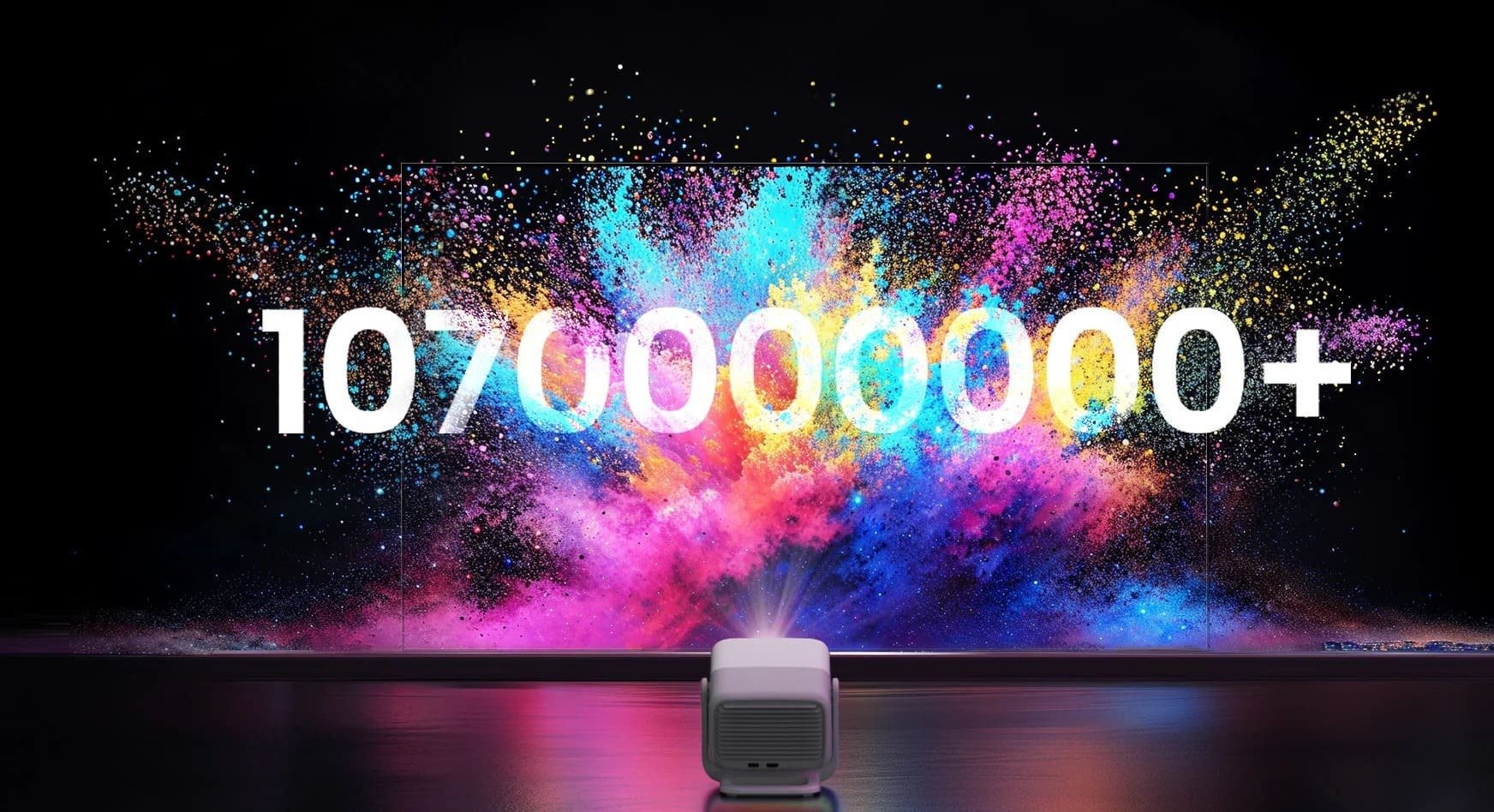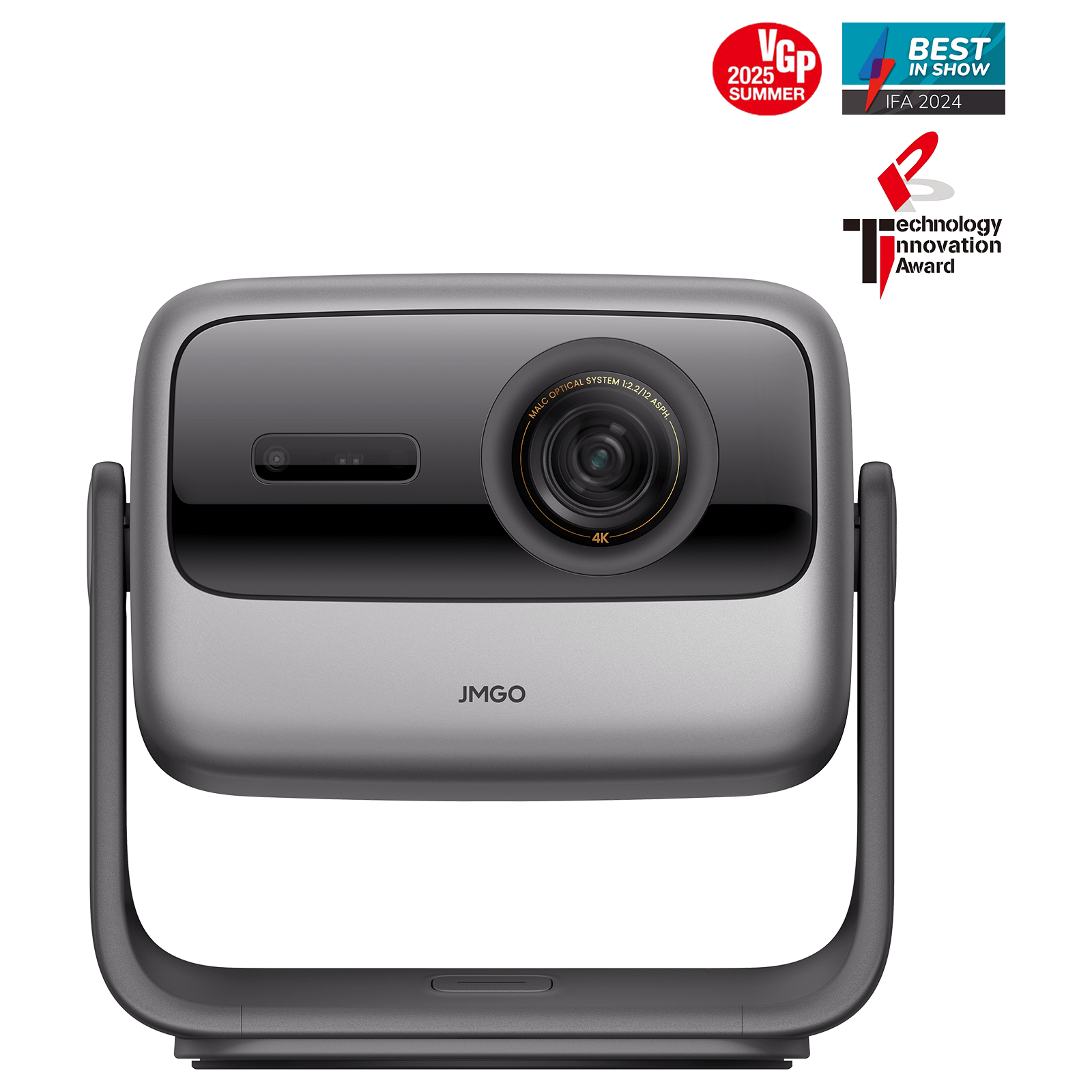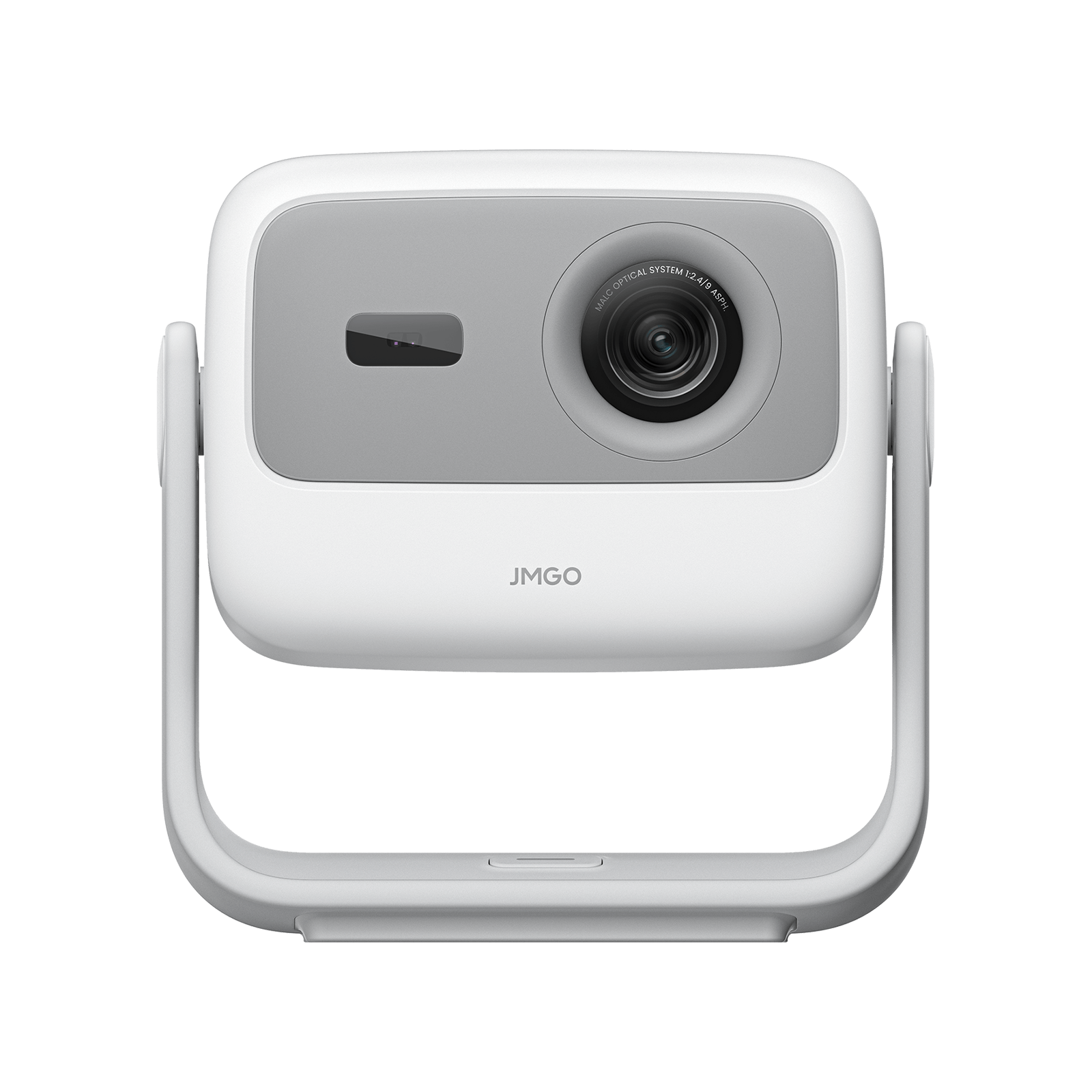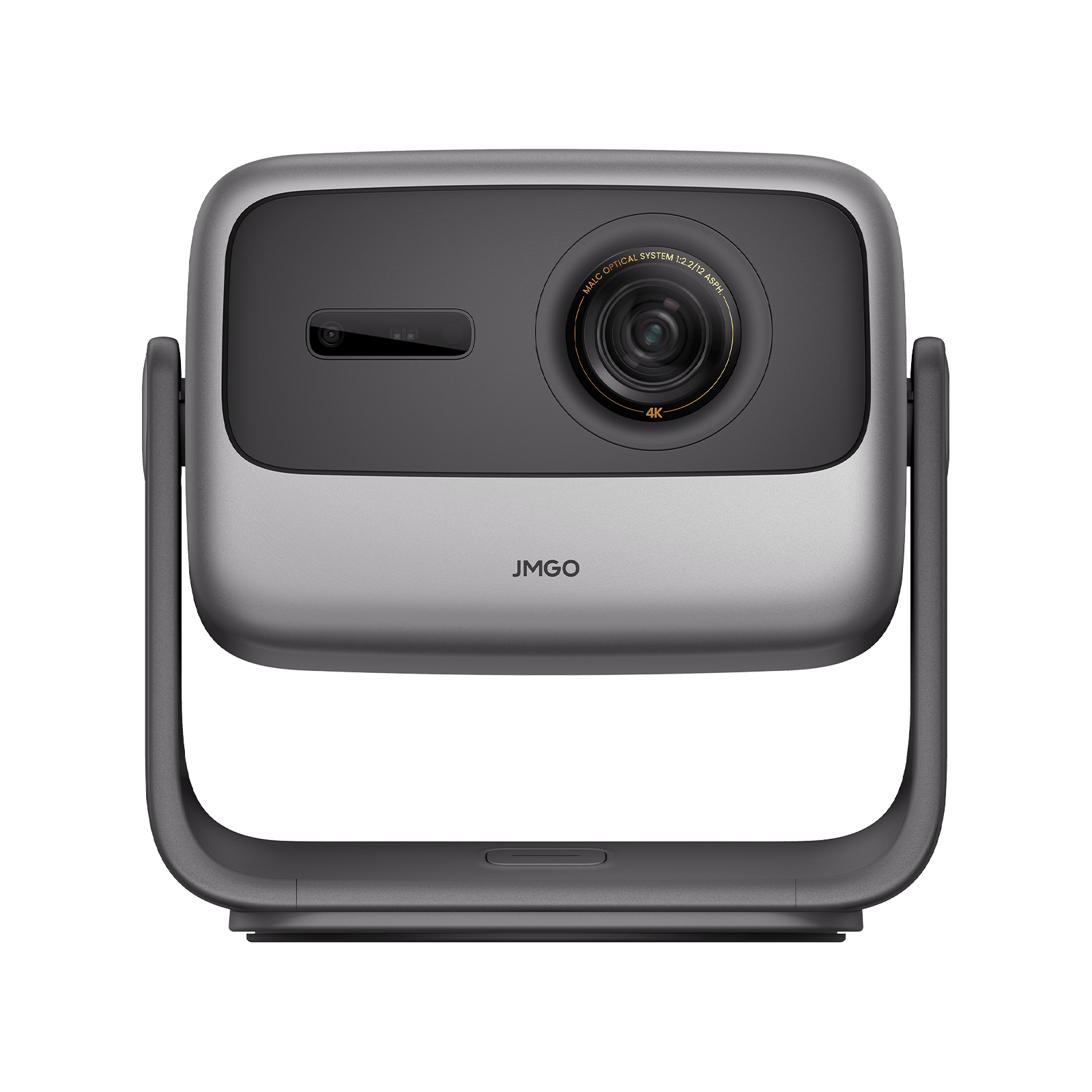Blog
5 Reasons Google TV is a Must-Have for Your Next Home Theater Upgrade
Discover why Google TV is a game-changer for your home theater setup. Learn how it enhances your viewing experience with JMGO projectors.
Apr 26, 2025
Your order is eligible for free shipping!
There's no item in your cart.
You May Also Like
You're Saving $0.00
Shipping, taxes, and discount codes calculated at checkout.
How to select
Choosing the Right Projector: Triple Laser vs Other Light Sources When creating a captivating home theater experience, picking the right projector is key. With so many options—traditional lamp, LED, non-triple laser, and triple laser projectors—deciding can be overwhelming. Here’s a straightforward guide to help you choose. Traditional Lamp Projectors Pros: Affordable, widely available, good color reproductionCons: Bulbs need frequent replacement, shorter lifespan, less energy-efficient LED Projectors Pros: Long lifespan, energy-efficient, compact and portableCons: Lower brightness, not ideal for large screens or bright rooms Non-Triple Laser Projectors (Single, Dual, Hybrid) Pros: High brightness, good color accuracy, long lifespanCons: Limited color gamut, possible color imbalance, higher cost than lamps or LEDs Triple Laser Projectors (RGB) Pros: Exceptional color accuracy, wide color gamut (up to 100% BT.2020), high brightness, long-lasting, minimal maintenanceCons: Higher initial cost, may need precise setup Key Comparisons Brightness & Image Quality: Triple lasers excel in both dark and bright rooms. Lifespan & Maintenance: Triple lasers last longer with almost no upkeep. Portability: LEDs are lighter and more portable; triple lasers suit dedicated setups. Cost: Triple lasers have a higher upfront price, but long-term value offsets it. Who Should Choose Triple Laser? Home Theater Enthusiasts: For a cinema-like experience with vibrant colors and stunning clarity. Examples: JMGO N1S Ultimate, Hisense PX3-Pro. Casual Users: Portable triple laser projectors offer richer colors than LEDs. Example: JMGO N1S 4K Mini. Business & Education: High brightness and reliability for classrooms or meeting rooms. Example: JMGO N1S Pro 4K. Conclusion Triple laser projectors offer top-tier image quality and longevity, ideal for those seeking the ultimate viewing experience. LED and lamp projectors remain practical for cost-conscious or portable needs. Understanding each type helps you choose the projector that best fits your lifestyle and environment.
SEP 24, 2025
Read more
Blog
Discover why Google TV is a game-changer for your home theater setup. Learn how it enhances your viewing experience with JMGO projectors.
Apr 26, 2025
Buying guides
One of the essential factors to examine when dealing with projectors is brightness, which is usually quantified in lumens. However, how many lumens are so essential in projecting bright, clear images, especially in brightly lit surroundings? In this article, we will analyze 2450 ISO lumens' sufficiency for projecting on bright surfaces and advise on how lumens impact the viewing experience. Understanding Lumens and Brightness Before exploring the sufficient level of 2450 ISO lumens for a bright room, it is crucial to comprehend the concept of lumens and what they measure. Lumens are units of measure for the total amount of light output from any light source, including a projector. Generally, the greater the number of lumens, the brighter the projection will be. When dealing with projectors, brightness is usually regarded in terms of ANSI lumens or ISO lumens, which are two defined standards for measuring light output. ANSI lumens: A common standard used by many projector manufacturers. ISO lumens: A more stringent measurement standard, ensuring brightness measurements are consistent across manufacturers. Now that we are on the subject of ISO lumens, a projector brightness rating of 2450 ISO lumens is quite impressive. The crucial question, however, is whether this brightness is adequate when the projector is used in a bright room. Remember to always look for a proper projector with a proper brightness; an example would be the JMGO N1S Ultimate. The Impact of Room Lighting on Projector Brightness The brightness required for a projector depends heavily on the ambient lighting conditions of the room where the projector will be used. Here’s a general rule of thumb to help guide your decision: Low-light environments (dark rooms): In spaces devoid of light sources, such as the interior and exterior of a home theater fitted with black curtains, projectors with a lumen output of 1000 to 2000 are most often adequate. Moderately lit environments: In spaces that have some light present (for instance, a living area with several windows but no direct sunlight), projectors of 2000 to 3000 lumens are perfect. Bright rooms: In case your room has a lot of natural light pouring in or it is outfitted with overhead lighting that cannot be controlled, it is advisable to use 3000 or more lumens. Is 2450 ISO Lumens Enough for a Bright Room? Now that we understand the general lumens-to-lighting relationship, let’s focus on the question at hand: Is 2450 ISO lumens enough for a bright room? The brief response is that it depends on the exact lighting conditions and the anticipated performance of the projector. 2450 ISO lumens falls on the higher end of the moderately lit room category, making it ideal for settings with light but no direct harsh sunlight. But for a very bright room, say one with wall-to-wall sunshine coming directly into the room, the brightness may not be enough to provide decent image sharpness and colors. Here are a few scenarios to help illustrate when 2450 ISO lumens would work and when it might not: Partially lit rooms: Should you wish to use the projector in such an armchair living room during the day and control the inflow of light (e.g., using some blinds or curtains), a projector with around 2450 ISO lumens should be bright enough for all-day casual watching. The projector will also project a picture that can be seen and enjoyed. Rooms with soft lighting: In spaces lit by overhead lamps or light fittings that are not very bright, 2450 ISO lumens can achieve a clear and vivid image. There will probably be some extent of contrast degradation, more so in dark pictures, but the overall experience will still be comfortable. Very bright rooms with direct sunlight: If you wish to use the projector in a setting that does not guarantee controlled lighting, such as a conference room or classroom with many large windows that allow a lot of sunlight, you may have a problem with image washout. In this scenario, projectors ranging from 3000 to 4000 lumens (or sometimes more) would overcome the available light. Factors to Consider Alongside Lumens While lumens are important, they aren’t the only factor determining whether a projector will perform well in bright rooms. Here are a few additional aspects to consider: Contrast Ratio: The difference between the brightest white and the darkest black that a projector can produce is referred to as the contrast ratio. In bright room settings, a very good contrast ratio (particularly 10,000:1 or higher) helps to enhance the three-dimensional and clear quality of the image, even if the surroundings are not completely dark. Screen Size and Distance: Lumens come in handy where larger projection sizes are present, and in maintaining a bright, crisp image, one requires more lumens. So, with a larger image size, there is a need for even much more than 2450 ISO lumens as it may be hard to achieve such brightness in projection angles above that in bright conditions. Lower lumens can be compared with a smaller screen or shorter throw distance. Ambient Light Rejection Screens (ALR): It is recommended that an ALR screen be used, which is purposely designed to obstruct ambient light intrusion and only reflect the projector’s rays toward the audience. Such screens can improve image quality considerably, even in spaces with artificial illumination. Projector Positioning: It is also important to consider the projector's location. If possible, try to avoid placing it in an area where it will be in the direct line of sunlight or bright strip lights, as this will help decrease the chances of washout. When Is 2450 ISO Lumens Ideal? There are specific situations where a projector with 2450 ISO lumens can be the perfect solution: Home theaters tend to have some light in the environment without any direct sunlight penetration. Controlling ambient light in a room (by using curtains, dimmers, or switching off lights) should make 2450 ISO lumens bring out an excellent viewing experience. Business presentations or conference rooms with moderate lighting conditions. This brightness level is appropriate when a room has a couple of windows without direct sunlight influence, and some light control is possible. Casual movie nights or gaming in the living room with a couple of lamps, most probably on, but generally not too bright. Conclusion To summarize, 2450 ISO lumens can be enough for a moderately bright room, but it may fall short in very bright environments with lots of natural or overhead light. If you intend to use the projector in a room where the light can be managed well, 2450 ISO lumens should be okay, providing a bright and clear image; however, in cases like that which will require the use of a projector in facilities with bright surfaces whether natural light or artificial light, projectors with 3000 lumens or higher are recommended. Also, remember that other aspects, such as contrast ratio, type of screen, and room setup, are equally important in achieving an enjoyable experience. In light of such factors, you can design your room so that the projector works perfectly well, irrespective of the amount and quality of light available in the room. If you want to know more about high-quality projectors, visit JMGO and get the best options for your home!
Oct 15, 2024
How to select · Sep 24, 2025
Choosing the Right Projector: Triple Laser vs Other Light Sources When creating a captivating home theater experience, picking the right projector is key. With so many options—traditional lamp, LED, non-triple laser, and triple laser projectors—deciding can be overwhelming. Here’s a straightforward guide to help you choose. Traditional Lamp Projectors Pros: Affordable, widely available, good color reproductionCons: Bulbs need frequent replacement, shorter lifespan, less energy-efficient LED Projectors Pros: Long lifespan, energy-efficient, compact and portableCons: Lower brightness, not ideal for large screens or bright rooms Non-Triple Laser Projectors (Single, Dual, Hybrid) Pros: High brightness, good color accuracy, long lifespanCons: Limited color gamut, possible color imbalance, higher cost than lamps or LEDs Triple Laser Projectors (RGB) Pros: Exceptional color accuracy, wide color gamut (up to 100% BT.2020), high brightness, long-lasting, minimal maintenanceCons: Higher initial cost, may need precise setup Key Comparisons Brightness & Image Quality: Triple lasers excel in both dark and bright rooms. Lifespan & Maintenance: Triple lasers last longer with almost no upkeep. Portability: LEDs are lighter and more portable; triple lasers suit dedicated setups. Cost: Triple lasers have a higher upfront price, but long-term value offsets it. Who Should Choose Triple Laser? Home Theater Enthusiasts: For a cinema-like experience with vibrant colors and stunning clarity. Examples: JMGO N1S Ultimate, Hisense PX3-Pro. Casual Users: Portable triple laser projectors offer richer colors than LEDs. Example: JMGO N1S 4K Mini. Business & Education: High brightness and reliability for classrooms or meeting rooms. Example: JMGO N1S Pro 4K. Conclusion Triple laser projectors offer top-tier image quality and longevity, ideal for those seeking the ultimate viewing experience. LED and lamp projectors remain practical for cost-conscious or portable needs. Understanding each type helps you choose the projector that best fits your lifestyle and environment.
How to select
Choosing the Right Projector: Triple Laser vs Other Light Sources When creating a captivating home theater experience, picking the right projector is key. With so many options—traditional lamp, LED, non-triple laser, and triple laser projectors—deciding can be overwhelming. Here’s a straightforward guide to help you choose. Traditional Lamp Projectors Pros: Affordable, widely available, good color reproductionCons: Bulbs need frequent replacement, shorter lifespan, less energy-efficient LED Projectors Pros: Long lifespan, energy-efficient, compact and portableCons: Lower brightness, not ideal for large screens or bright rooms Non-Triple Laser Projectors (Single, Dual, Hybrid) Pros: High brightness, good color accuracy, long lifespanCons: Limited color gamut, possible color imbalance, higher cost than lamps or LEDs Triple Laser Projectors (RGB) Pros: Exceptional color accuracy, wide color gamut (up to 100% BT.2020), high brightness, long-lasting, minimal maintenanceCons: Higher initial cost, may need precise setup Key Comparisons Brightness & Image Quality: Triple lasers excel in both dark and bright rooms. Lifespan & Maintenance: Triple lasers last longer with almost no upkeep. Portability: LEDs are lighter and more portable; triple lasers suit dedicated setups. Cost: Triple lasers have a higher upfront price, but long-term value offsets it. Who Should Choose Triple Laser? Home Theater Enthusiasts: For a cinema-like experience with vibrant colors and stunning clarity. Examples: JMGO N1S Ultimate, Hisense PX3-Pro. Casual Users: Portable triple laser projectors offer richer colors than LEDs. Example: JMGO N1S 4K Mini. Business & Education: High brightness and reliability for classrooms or meeting rooms. Example: JMGO N1S Pro 4K. Conclusion Triple laser projectors offer top-tier image quality and longevity, ideal for those seeking the ultimate viewing experience. LED and lamp projectors remain practical for cost-conscious or portable needs. Understanding each type helps you choose the projector that best fits your lifestyle and environment.
Sep 24, 2025


